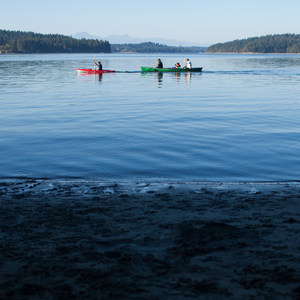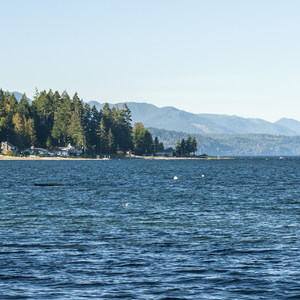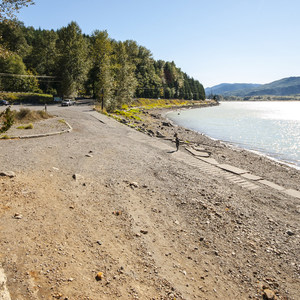Built as a fur trading outpost in 1833 by the Hudson’s Bay Company, Fort Nisqually was the first European settlement on the Puget Sound in what was then the American and British occupied Oregon Country. The fort served as an intermediate trading post for the company between the larger Fort Vancouver, built in 1824 on the north bank of the Columbia River, and Fort Langley, built in 1827 along the banks of the Fraser River in what is now British Columbia.
The site where the fort originally stood lies in a completely unassuming field alongside the Sequalithcew Creek, 1.5 miles east of the Puget Sound. Today there is little evidence of this historic landmark and almost no official signage off of Center Drive to mark the spot, although a few interpretive signs at a crossing over the creek do assure you that you're in the right spot.
After the fort officially closed in 1869 it quickly fell into decay. Efforts to preserve what was remaining of the long-abandoned and decrepit fortress, primarily its two remaining structures, the Factor’s House, and the Granary, began as early as 1933. Both structures were relocated to the Point Defiance site, and the rest of the outpost was recreated to became the Fort Nisqually Living History Museum, intended to exhibit life at the fort as it was in 1855. Today, the Granary stands as Washington’s oldest standing wood-framed structure.
54°40’ or Fight and + The End of Fort Nisqually
During the 19th century, ownership claims to much of the land west of the Mississippi River were constantly disputed. The U.S. and British Treaty of 1818 formally defined a north-south boundary along the 49th parallel all the way from Minnesota to the "Stony Mountains" (Rocky Mountains). The great expanse of land west of the Rockies would not have a defined boundary, however; it would be shared for common interests and use. Americans at the time referred to the land as the Oregon Country, and the British called it the Columbia District of the Hudson's Bay Company.
Tensions between the parties sharing the Oregon Country were continuous, and Fort Nisqually was no exception. Under the Polk administration, the U.S. pushed for a more northerly boundary near the 54th parallel (think "54°40’ or fight"). The Spanish-American War broke out at the same time, however, and in an effort to avoid simultaneous wars, the U.S. agreed to the Oregon Treaty of 1846. In the treaty, the U.S. settled for extending the country's boundary along the 49th parallel all the way to the coast. The treaty created a new official name for the U.S. land, the Oregon Territory, and Fort Nisqually, run by a British company, was stranded. In a climate of diminishing fur trade profits and ugly tax disputes, Fort Nisqually was eventually closed in 1869.










Comments
Sign In and share them.